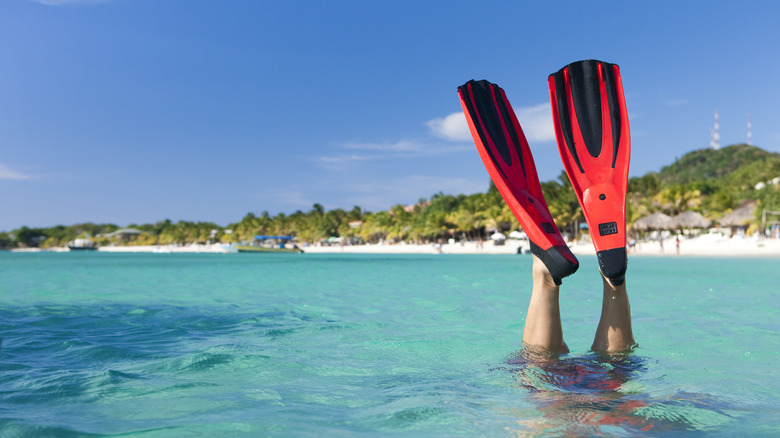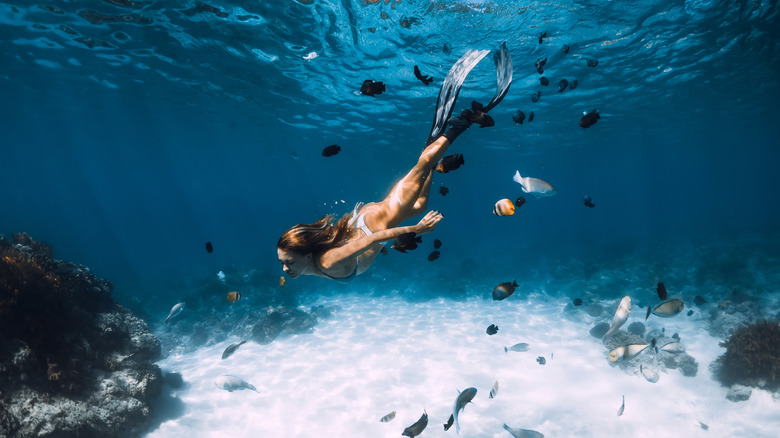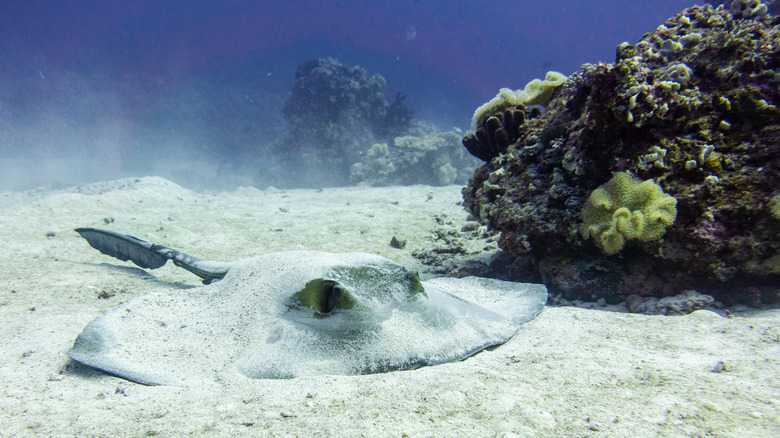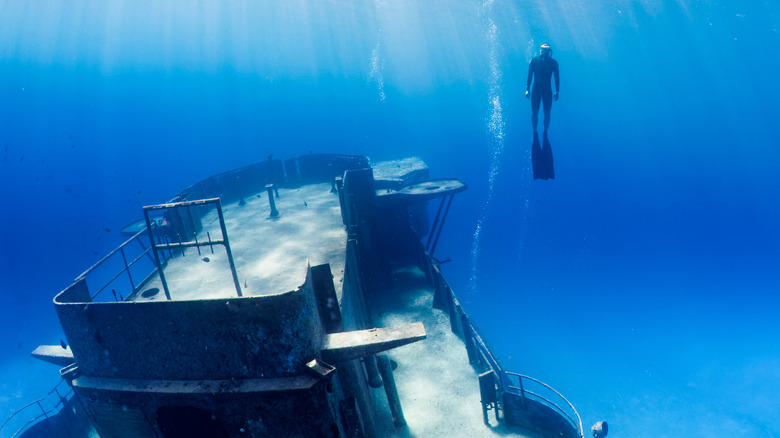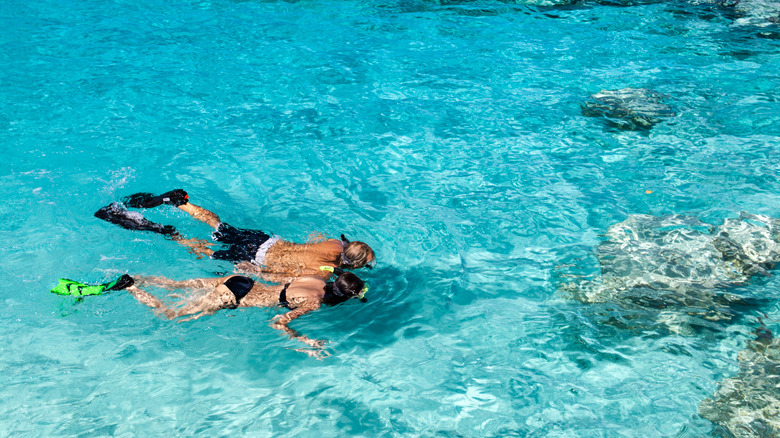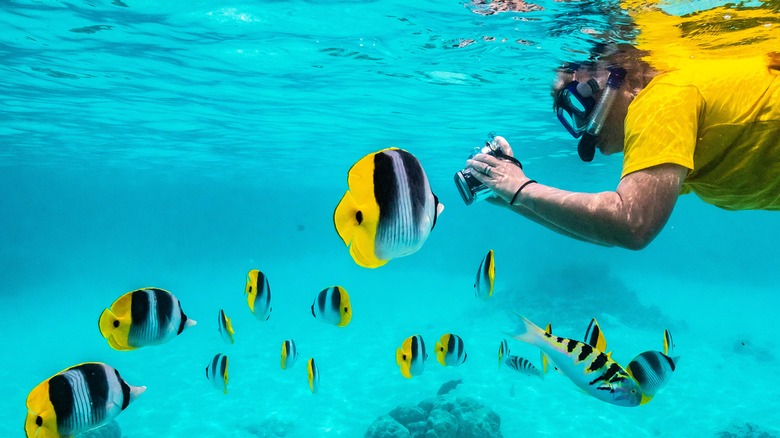Should You Always Wear Fins When Snorkeling?
Picture this: You're snorkeling in an exotic locale like the teal waters of the Bahamas or the enchanting reefs in the South Pacific. You've just finished exploring the shallow zone and scored some excellent face time with an array of tropical fish. You know there's a shipwreck a bit further out, but your energy is depleting thanks to some chop on the water. Your legs start to cramp, and your arms are already exhausted. It looks like you'll have to head back to shore and skip the epic wreck everyone keeps talking about.
Do you know what would've been helpful in the above scenario? A trusty pair of fins. You're free to snorkel without them, but there's no need to skip them. Consider the difference between walking and rollerskating. Walking is more natural, but rollerskating delivers you to more places in the same amount of time. Fins operate much in the same way. They are designed to let you experience the ocean like marine species do, as though swimming is second nature.
Of course, there are a few drawbacks. You'll need room in your luggage or some cash for rental equipment. If it's your first time snorkeling, you might accidentally kick another swimmer or a coral reef, demolishing several decades of growth in a nanosecond. Plus, a good pair of fins can be a modest investment, ranging from $40 to $80. That said, the pros still outweigh the cons. Once you're in the water, you'll immediately notice the difference.
Fins will make you more hydrodynamic
With their upright stance and two legs, humans are optimized for life on land. Marine species are optimized for life underwater with their horizontal posture and fins. Unless you're Olympic gold medalist Michael Phelps, the limitations of being in a stark opposite environment will soon become apparent, especially when ocean currents are thrown into the mix. Unlike the calm waters of a pool, the open ocean is a temperamental terrain. A pair of fins will allow you to become more hydrodynamic, which is a fancy way of saying you'll move more effortlessly and efficiently through the water, like a fish.
A larger surface area hugging your feet means you can exert more force with each kick (called thrust), propelling you forward more efficiently (called propulsion). Fins naturally supply your legs with more support, so you can better utilize this large muscle group to get around. Unlike barefoot swimming, you won't need much upper body energy to get the job done. In fact, you may be able to leave your arms out of the equation altogether.
Fins will protect your feet from critters and cuts
Many of the world's most beautiful habitats are thanks to high volcanic activity, like the best snorkeling spots around Hawaii. Those centuries-old basalt rocks can have sharp edges on the surface and underneath the water. If you were to stand barefoot on the ocean floor for a quick rest, you could accidentally cut yourself on a jagged rock.
The same goes for coral. While you're never supposed to touch anything while snorkeling, your bare feet could brush up against the corals if a current takes you by surprise. They may look soft, but many species of coral are as hard as rock and will be anything but comfortable on the naked soles of your feet. A collision would be unfortunate for you and the coral, as they are far more delicate than they appear. Fins, at least, would provide a little more protection, not to mention more control to help you steer away from the reef.
If you're in a sandy area, there could be animals hiding just beneath the top layer of sediment, like stingrays. They could feel threatened and attack you if you accidentally get close to one. A sturdy pair of fins would provide a much-needed layer between you and that painful stinger. Cutting your trip short would be a shame because of a simple accident like this.
Fins can keep you in the water for longer
Traditional swimming is quite the workout. Snorkeling with fins means you can make minimal kicking motions and use less energy. This allows you to stay in the coral reefs longer and explore more areas without getting too tired. Some of the best snorkeling spots are often found offshore, and fins will give you the confidence to venture out and swim with sea creatures away from tourist traps.
With less of a chance of burning out, you'll have plenty of pep left for free dives. If you see something interesting on the ocean floor, like a majestic sea turtle or a wreck, you'll need that extra bandwidth to hold your breath and get a little closer (respectfully, of course). Even with the limited air in your lungs, your fins will get you there and back with relative ease. Keep in mind that the pressure and currents are more intense the deeper you go — just another reason to rely on fins for power.
Fins help you control your movements and stay safe
Many fins are designed to float toward the water's surface, giving you extra buoyancy by lifting your feet. This ensures that you can stay in a comfortable horizontal posture for a prolonged period and maintain an optimal swimming technique. Your movements will be much more efficient for far less effort. Fins can also help you capitalize on an existing current going in a particular direction, like a turbo boost on a car.
Fins offer slick maneuverability and allow you to turn on a dime. While swimming barefoot, you may notice that you need to kick with force and stroke your arms a few times to change course. But with fins, you can move up, down, or turn with precision using a simple flick of the ankles. It is important to snorkel around coral reefs and keep a safe distance from marine life.
Fins are also helpful if you must dodge an unexpected obstacle or get caught up in a rough patch of water. Remember, conditions can change quickly. Even when the ocean starts smooth as glass, a shift in the tide can bring bigger waves and stronger currents. Your fins will give you the extra power to ditch the choppy areas and return to safety. As a bonus, if you're donning fins in a bright neon color, your friends and lifeguards can see you more easily.
Fins offer a more relaxing swim
Far from thrashing your arms and legs around, fins offer a more natural way to move. Once you figure out which kicking style you're partial to (flutter up and down or frog kick to the side), you'll get into an effortless, meditative flow. With less action to worry about, you can actually relax and enjoy your natural surroundings. Slow, intentional movements are also less likely to startle nearby wildlife. Splashing or erratic movements might cause them to feel threatened or scurry away into hiding. Instead, your fins will encourage a more peaceful viewing experience and increase your chances of capturing amazing underwater photos.
The right fins for you will depend on what kind of territory you're swimming in. If the entry to the water is soft sand, you can get away with walking barefoot into the water and putting on classic fins, which are closed around the ankle. If you're in an area with sharp rocks, it's best to sport a pair of water shoes and throw open fins over the top, which have an adjustable band around the ankle to adjust the tightness. Shoot for a Goldilocks-style fit; not too loose that they come off in the water, but not too tight that you feel constricted. Be sure to practice swimming with your fins in a pool or shallow area of the sea before you head to the open water. Once you get used to your fins, you'll wonder how you ever swam without them.
